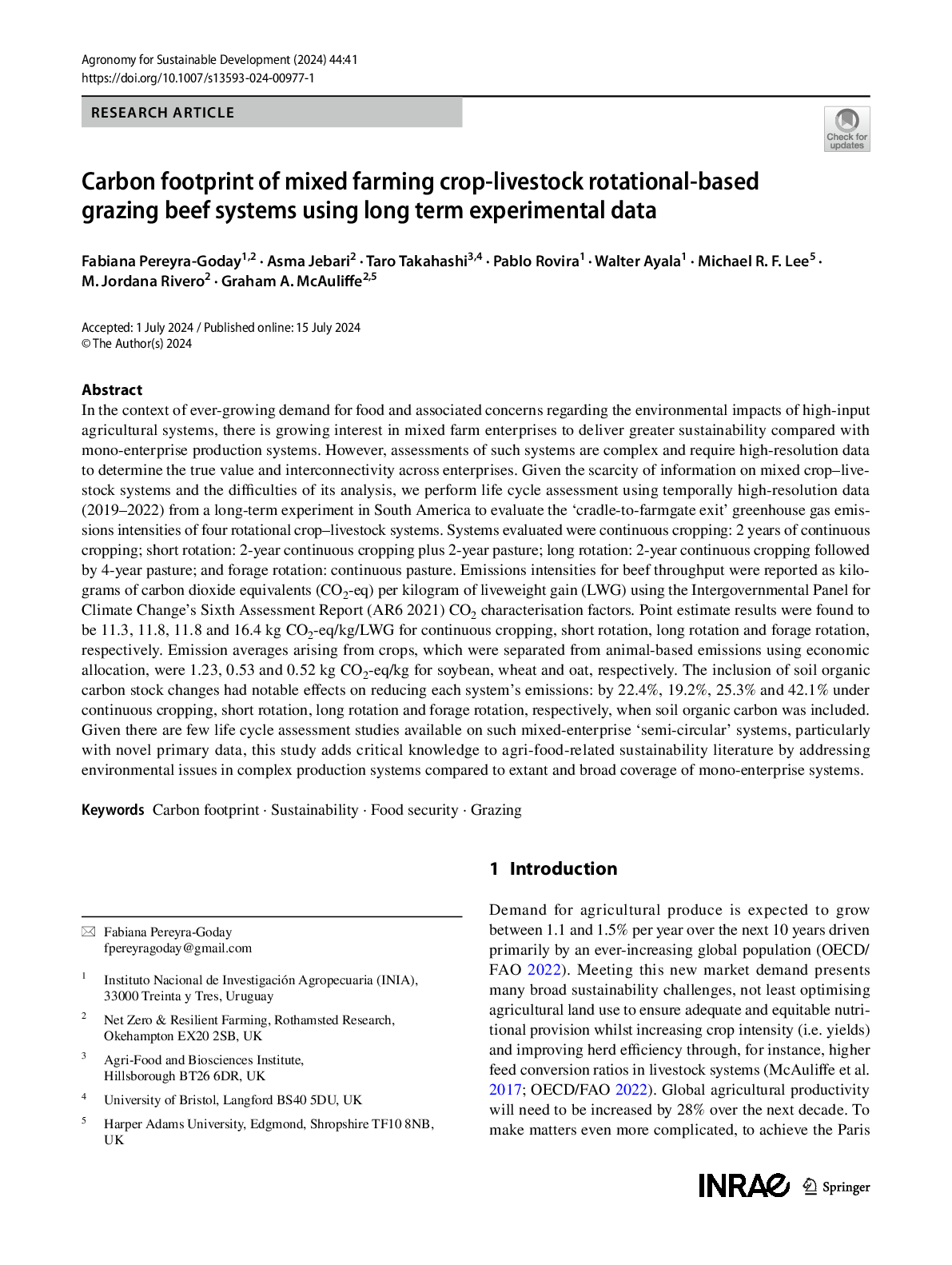ABSTRACT.- In the context of ever-growing demand for food and associated concerns regarding the environmental impacts of high-input agricultural systems, there is growing interest in mixed farm enterprises to deliver greater sustainability compared with mono-enterprise production systems. However, assessments of such systems are complex and require high-resolution data to determine the true value and interconnectivity across enterprises. Given the scarcity of information on mixed crop-livestock systems and the difficulties of its analysis, we perform life cycle assessment using temporally high-resolution data (2019-2022) from a long-term experiment in South America to evaluate the 'cradle-to-farmgate exit' greenhouse gas emissions intensities of four rotational crop-livestock systems. Systems evaluated were continuous cropping:2 years of continuous cropping; short rotation:2-year continuous cropping plus 2-year pasture; long rotation:2-year continuous cropping followed by 4-year pasture; and forage rotation:continuous pasture. © The Author(s) 2024.

